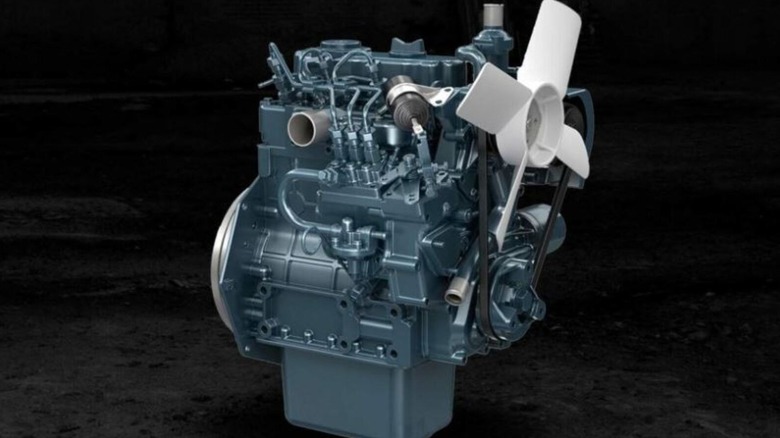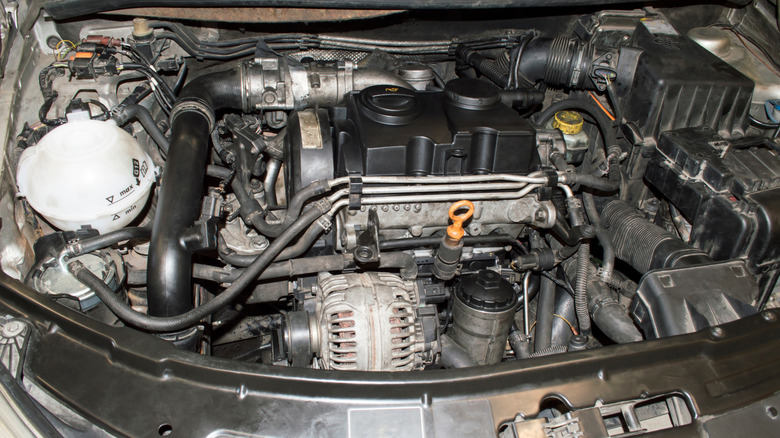Is There A 3-Cylinder Diesel Engine?
Commonly used in trucks and heavy machinery, the diesel engine is one of the most important engines created. Developed in the late 1890s by German engineer Rudolf Diesel, the diesel engine came from years of research to build a more efficient and powerful engine using higher compression ratios. Today, it's the pillar of transportation and many industries worldwide, used for cargo, construction, marine applications, and power generation. Because of its diverse use, there are several types of diesel engines, including the smaller three-cylinder variant.
The first diesel engine was a single-cylinder machine capable of just 20 horsepower, but shortly thereafter, other companies made modifications to its design to produce more power. An important development for the engine came in 1897, when the first dual-cylinder version made by Imanuel Lauster came out. Within a few years, three-cylinder diesel engines became available when, in 1902, fellow German and co-founder of the Anheuser-Busch beer company, Adolphus Busch, began building and selling three-cylinder engines through a partnership with Rudolf Diesel.
Compared to bigger engines, the modern three-cylinder is cheaper and easier to build, given its fewer parts and simpler design. This allows the engine to be more versatile, consume less fuel, and have a compact and lightweight form. This small size, however, causes its disadvantages, which include less power, requiring the engine to work harder, and a slower response to input. Three-cylinder engines also feel and sound rougher, producing more noise and shaking while in operation. Despite its drawbacks, three-cylinder and other types of diesel engines are still more efficient than their gas counterparts.
A small but potent engine
Diesel engines are normally categorized into two main types: the two-stroke, where the intake, combustion, and exhaust process occurs in the cylinder liner ports, and the four-stroke, which uses valves for intake and exhaust and sees the piston operate four strokes to produce a combustion cycle. Another way of classifying diesel engines is based on their output and size, starting with small engines, including the three-cylinder variant that are used in portable generators, vehicles, and agricultural machinery. Next are the medium diesel engines that are used in heavy-duty trucks and vehicles, while the largest types of engines are used for locomotives, ships, and base load generators.
Three-cylinder diesel engines can use either the two-stroke or three-stroke operating cycle, and their average power output can range from 25 horsepower to as much as 99 horsepower. Despite a simpler design, three-cylinder engines are still susceptible to common issues associated with diesel engines. Lastly, in contrast to the ubiquitous use of the more popular four-cylinder engines, three-cylinder diesel engines are specific to smaller vehicles and machines, like lighting rigs, pumps, and compressors, where their power output and smaller footprint make them ideal.
Alongside the three-cylinder version, other odd-numbered cylinder diesel engines were produced. From the late 1990s up to 2014, Swedish carmaker Volvo equipped several of its models with quiet and powerful five-cylinder powerplants, such as its D5 diesel, with performance capabilities that contradict several myths about diesel engines. In addition, other companies have also made even bigger seven-cylinder engines, including renowned power and marine engine manufacturer Wärtsilä and the Finnish engine maker Agco, which produced a 500-horsepower engine for agricultural use.

